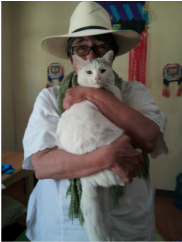After disembarking from our “ chicken bus” Milly and I waited for Julio in Sumpango’s inviting Central Parque and devoured ice cream cones from the nearby neveria. I had been so enamored with the array of delectable cookies and the enticing slices of cake from the panaderias that I had not yet visited one of Guatemala’s many ice cream shops. Chocolate is depicted as a divine food in the Mayan glyphs. So perhaps I shouldn’t have been surprised when my cappucino ice cream
cone was dipped in hot Guatemalan chocolate and then sprinkled with chopped walnuts. The flavorful ice cream and the crunchy fresh cone made it an outstanding ice cream experience as well as a fitting prelude for an afternoon of kites.
Julio approached us with a smile, wearing a Giant Kite festival t-shirt, identical to the tshirt I had won in the raffle at his
kite workshop. He greeted us warmly and told us we would need to take a local minibus to a location where we could talk about the kites. As we waited for the minibus, Julio motioned to a boy carrying a sheath of long grass. Fingering the stalk, he
explained this is what we had used for the frame of the small kites we made at the workshop. I had assumed the “sticks”
we were given were bamboo, like the skewers available at craft shops, but this grass with its tough stem is from Sumpango.
Julio added that the giant kites do in fact use enormous bamboo poles for their frame because they require large wood that is both light and strong. Each kite group – there are around 75 kite groups in Sumpango -- hires a pickup truck to go to the coast
to buy the appropriate lengths of bamboo for their kites which measure from 3 to 6 meters. Kites traditionally require 8 poles.
Julio’s group begins work on their kite in April and they continue working on the kite at night until the end of October. In Sumpango there are about 75 groups of kitemakers. Julio’s group has 35 members, including artists, an architect, a graphic designers, lawyers, young people and other teachers, like Julio himself. Though the overall design of the annual kite is conceived by three primary artists in his group, the decisions about color, the hours of labor and the undertaking of the considerable expense of the kite is a group effort. By tradition, the kites are kept secret until the kites are mounted or flown on November 1. Each group has a name. Julio’s group adopted the name, “the happy boys” which was controversial, he said, because it was in English. Other group names are in Kachikel or Spanish. He said their group wants to be known for their innovation -- their most recent kites incorporate open spaces into the kite design. They are also interested in making this unique art form more accessible to the world at large and using English, Julio said, demonstrated their interest in multiculturalism. And certainly Julio himself seemed very happy to be talking about kites!
He asked if we would like to see a kite. “But of course!” we said. And so from his cardboard box Julio withdrew two large bundles of paper which we took outside to the play area to unfold. He explained that these were two parts of a three part kite. The theme of this kite was life, death and creation. The first kite illustrates the Mayan creation story in which life comes
from the sea. In the second kite the angel of death embraces a woman who has died. The colors and details of the kite are a testament to hours of paper cutting and an expertise in the use of tissue paper to make gradients of color by layering the paper. He told us the eye lashes of the figures on the kite were made by using surgical scissors. “Nothing is painted,” he
reiterated. At the edge of the kite he fingered the layers of thin tissue paper used to construct the kite. He explained that parts of the design are first drawn on paper, then traced onto the kite. Different colors of china paper are cut and layered to create the design and the many shades of color. Even standing in front of the kite I had to remind myself that every detail was made from cut paper and not in fact painted.
Julio led us onto the flat roof of the school so I could take a picture of the kites. Then we refolded the intricate paper murals.
“Do you have time to see a giant kite,” he asked, “I have one here.”
The kite we had just seen was the largest and certainly the most beautiful kite I had ever seen, so I was surprised by his question. But I was definitely eager to see another kite his group had made.
strips of packing tape. This strengthens the tissue paper to provide sufficient resistence so that the very large area of the kite can be glued to the frame and then raised to a vertical position.
The kite filled the entire playing area – about the size of a soccer field. Three kids stood outside the school fence to watch and I joined them to take a picture as if was impossible to capture the whole kite otherwise. This kite was one they had made two years before. Julio has taken this kite to several international kite exhibitions including the recent kite festival in Columbia.
Once again, I was astonished by the magnitude of this endeavor and the dedication and skill of those who gather together to create this vision, without hope of payment and solely for the joy and cultural affirmation of this fragile and unique art form.
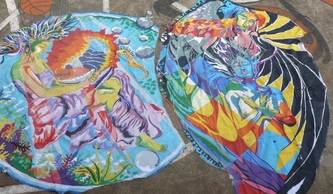
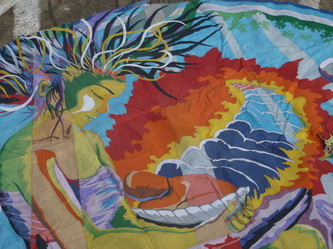

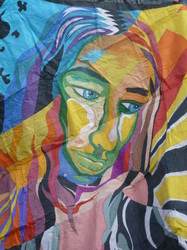
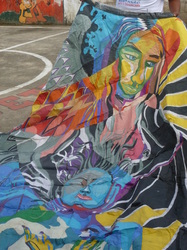

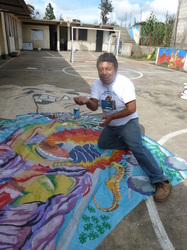
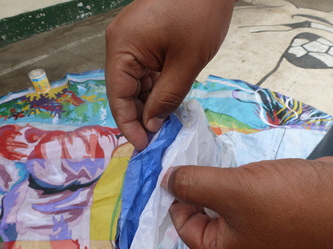
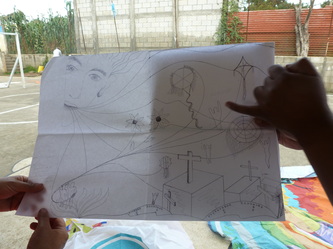
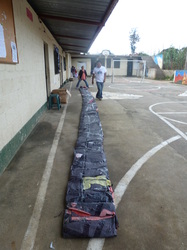
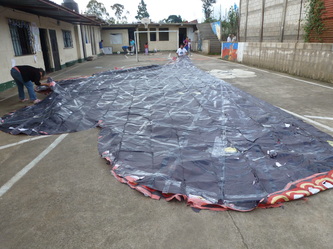
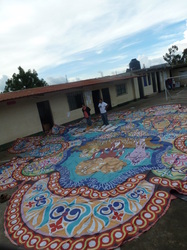
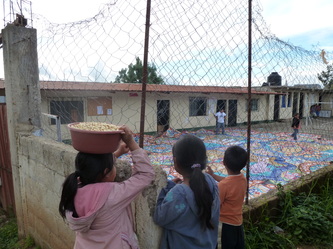
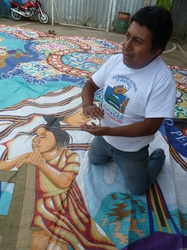
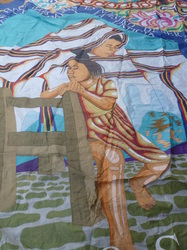
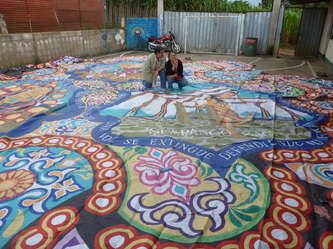

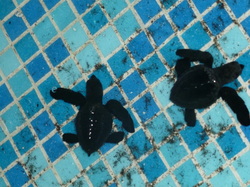
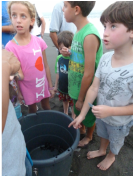
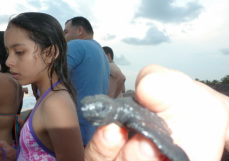
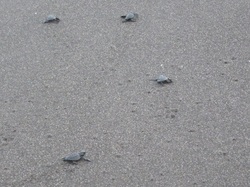
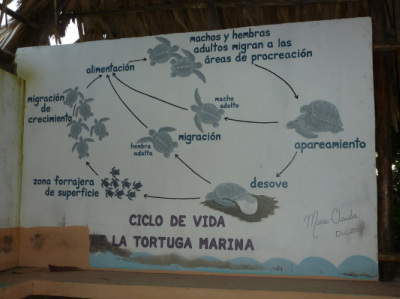
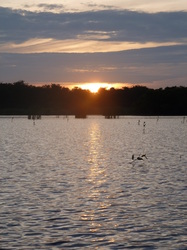
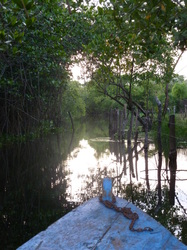
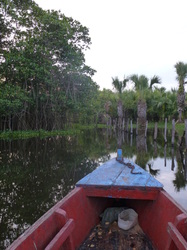
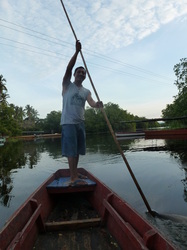
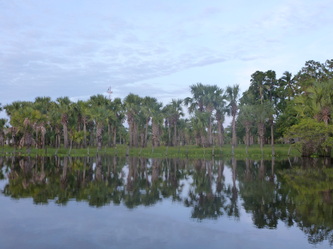
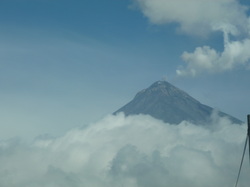
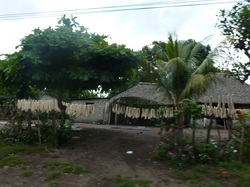

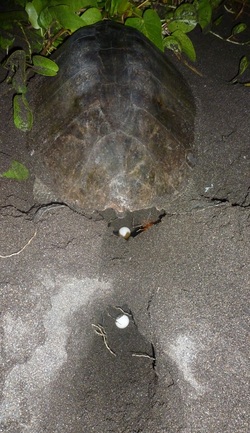
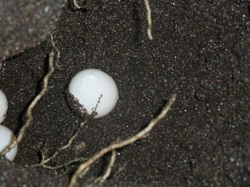
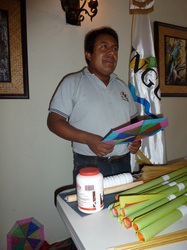
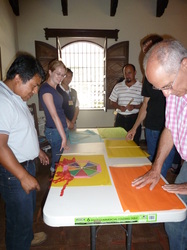
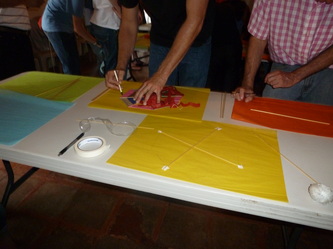
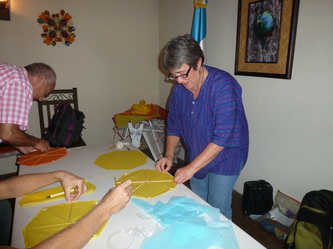
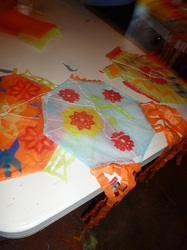
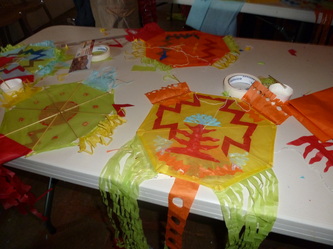
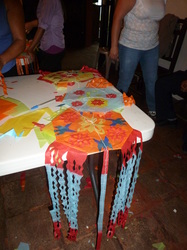
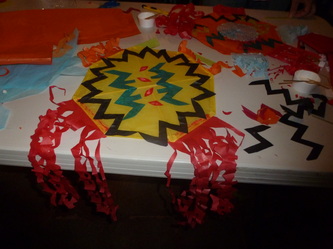
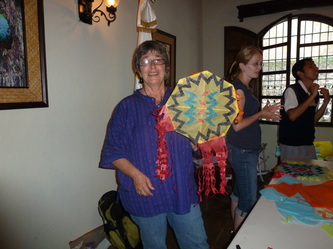
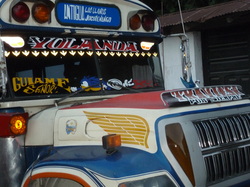

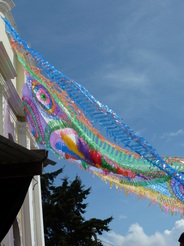
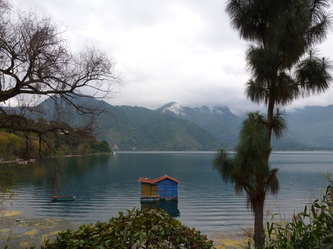
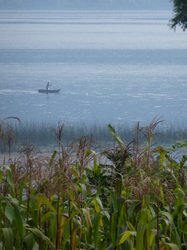
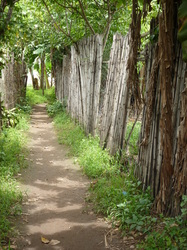
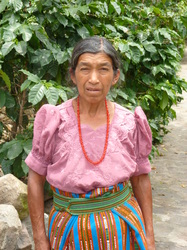
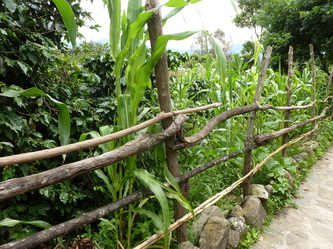
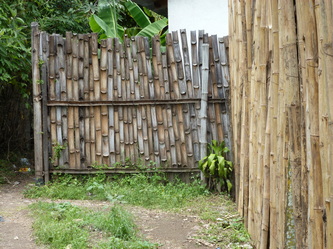
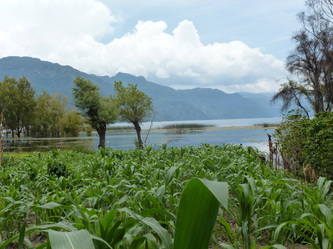
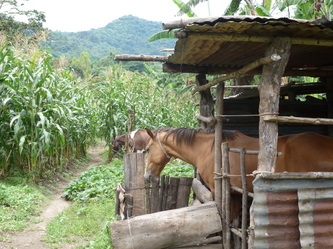
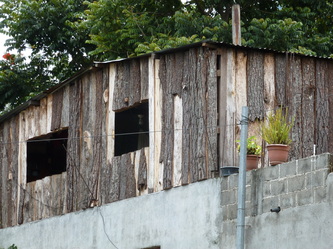
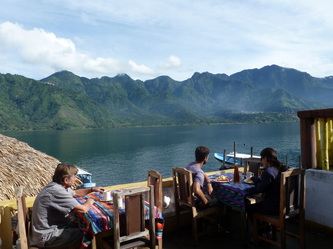
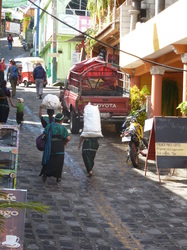
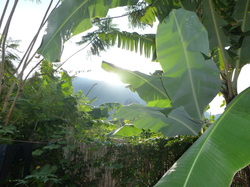
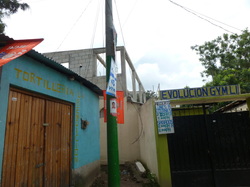
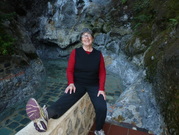
 RSS Feed
RSS Feed
